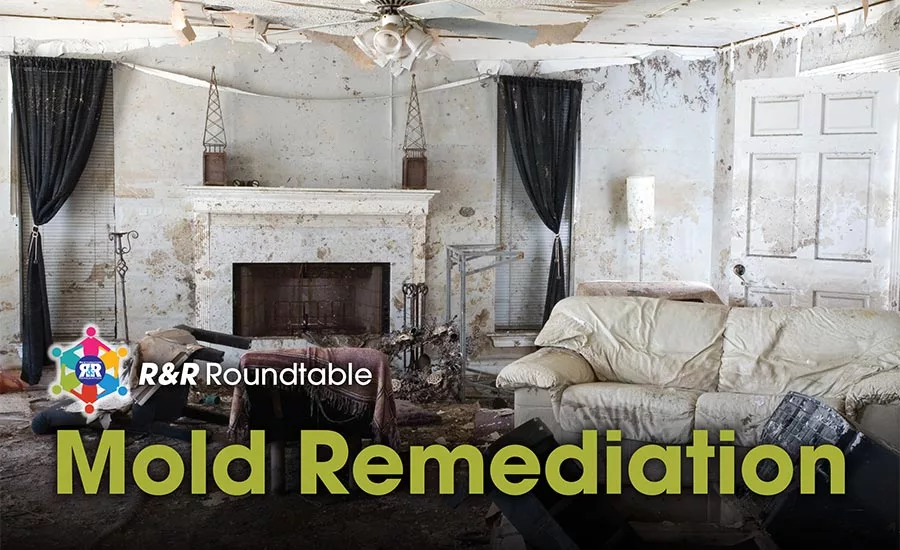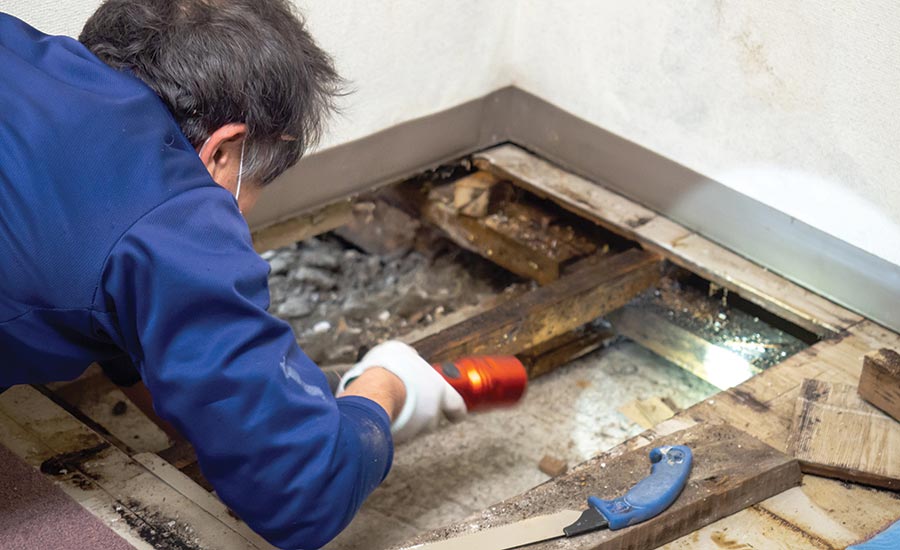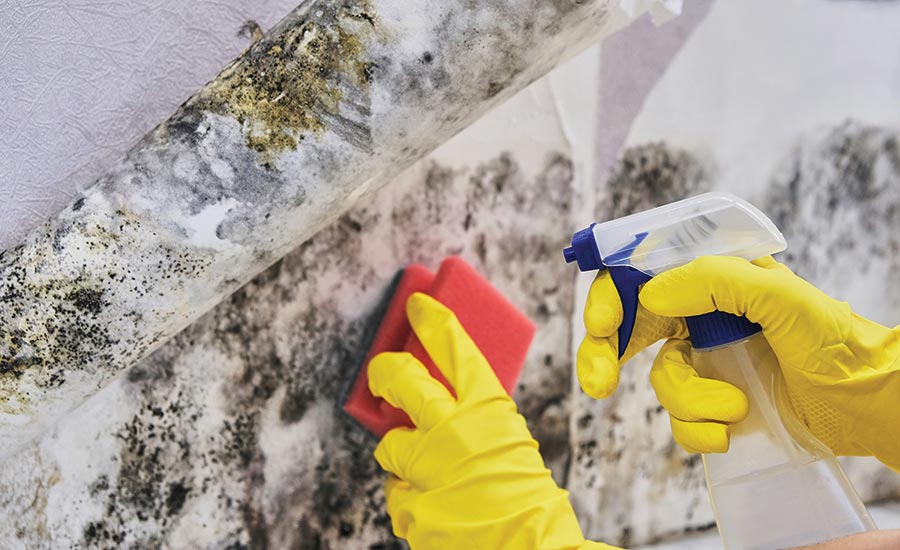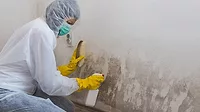R&R Roundtable: Mold Remediation

Editor’s Note:
The R&R Roundtable was designed to bring a number of viewpoints on restoration-related topics together in one place. This month, five companies specializing in mold remediation are sharing their viewpoints on product options, training, remediation misconceptions, and more.
1. Tell me a little bit about yourself and background in the restoration industry.
Nancy Ewing | Anabec: I have been working in the industry for 18 years, specifically for Anabec, Inc. Throughout my career, I have worked in all areas of the corporation a Corporate Trainer for Technical Support and Product Knowledge, Vice President of Marketing/Sales and Customer Service, Vice President of Market Research and Product Development and for the last five years, President of Anabec, Inc. We are fast approaching our 27th year in business. As an internationally, acclaimed manufacturing company, Anabec offers a premier restoration and prevention product line for mold, bacteria and viruses.
Bret Sallee | Goldmorr: I’ve been in construction most of my adult life or about 35 years as a general contractor, builder, and remodeler. In 2010, I segued into fire, water, and disaster restoration which is where I got into mold remediation. I’m certified in mold remediation and inspection. Since 1998, the Goldmorr System has provided a complete mold remediation system using unique, non-toxic and biodegradable products created specifically for the removal of mold spores.
Brad Smith & Kim Sutherland | Artemis Bio-Solutions: Brad has been involved the restoration industry for over 10 years. He has experience remediating a wide range of restoration projects including mold, fire, meth lab, high-level disinfection and decontamination, crime scenes, and more utilizing the Artemis Bio-Oxygen line of products. Kim Sutherland joined Artemis Bio-Solutions in the spring of 2018 with six years prior experience with antimicrobial surface protection.
Chris Heller | Bad Axe Products: I have been in the industry since 2006. We started out as a service company, offering the application of a warrantied, mold prevention product for commercial and residential new construction. Our business shifted into mold remediation during the subsequent housing construction decline. That Chicago area restoration company – known as Mold Solutions of Chicago was eventually sold. That was done to focus on becoming a manufacturer and distributor of the products that most logically and effectively solved the challenges we had faced in mold prevention and mold remediation. That manufacturing endeavor started as FastMoldRemoval.com, and introduced MMR mold stain remover to the industry. MMR sparked an industry shift in the way mold stain removal was handled. We are now known as Bad Axe Restoration Products, and offer a broader line-up of chemical product solutions for remediation and restoration.
Ron Elgazar | PX10: I have been in the restoration industry for nearly 20 years. Throughout that entire time, my company has encountered mold. Being located in Southern Florida, this is an everyday occurrence. I am always on the cutting edge of the latest and greatest when it comes to removing mold.

2. What are some common misconceptions you see from remediation contractors today when it comes to mold removal?
Ewing: It is very important that the right products for the specific problem and surface are used and the moisture intrusion problem is fixed before moving forward with remediation. For example, there are many contractors that believe over the counter bleach is an effective treatment. This is a dangerous and antiquated thought process since bleach will exacerbate the problem due to it being an actual food source for mold. Once it off-gases, the remaining ingredient is water. Many contractors believe a stain remover is enough for remediation. This is simply a cosmetic fix and not a remediation application. Another important factor that is often misunderstood is the importance of preparation of the surfaces prior to remediation and the importance of personal protection. Containment, removing visible growth with a bristle brush, HEPA vacuuming the surface, negative air along with the importance of personal protective equipment are all imperative. Many contractors do not realize the importance of checking with their state regulations regarding mold remediation. In certain states, there is an approved Department of Labor work course, training on personal protection equipment and state licensing fees.
Sallee: A big misconception I see is the need to remove the building material that mold is on. Nonsense. The IICRC S520 says to remove the “source” of the contamination (i.e. in my view, the mold itself). Drywall isn’t the source. The S520 also states to return structural elements to pre-loss condition, so here are some misconceptions I see:
- You can’t “return” something to condition 1 if you “remove” it.
- Species identification is important: I’ve yet to have a customer okay with leaving mold in there home simply because it was a species thought to be less dangerous. We do testing to make sure we have gotten rid of all mold species.
- That EPA registration is necessarily a positive thing. The EPA requires registration of PESTICIDES, period! If your product claims to “kill” mold then it has to be registered. But what many don’t realize is that often and in many states that triggers the necessity for contractors who use that product to have a pest applicators license. Most remediators don’t have a license and don’t realize they are legally required to have one. They will get fined. Goldmorr neither is, is required to, nor wants to be registered by the EPA.
Smith & Sutherland: A common misconception we see is that traditional methods of mold removal like hand sanding, wire brushing, and media blasting (sand, sponge, soda, dry ice) are the only effective way to remove mold. Today’s technologies and chemistries provide a much safer, less abrasive, and time saving way to accomplish mold removal. Artemis MSR Plus is one example.
Heller: Some contractors believe and represent that mold stain removal constitutes a thorough mold remediation. And although stain removal is sometimes the primary objective of a customer, there are certainly other considerations that should be made on job sites. We also notice that some contractors promote the antimicrobial and disinfectant characteristics of stain removers. This is a slippery slope however, as most stain removers do not have EPA registration to make kill claims. It’s important to understand the available products, their claims, legitimate uses, and any shortcomings.
Elgazar: Amazingly, most contractors still think the best way to remove mold is to cut it all out. This leaves the homeowner with a lengthy and costly rebuild. Instead, we kill the mold, clean the surface and get the homeowner back in their homes more quickly and cost-effectively.
3. How can using the right products throughout the remediation process help ensure clear test results in the end?
Ewing: The only true way to ensure clear test results are if pre and post testing is done. Surface testing takes samples from surfaces to find the amount of mold growth and spores deposited. Samples are collected by swabbing or tape lifting. The sample is then examined in an accredited microbial laboratory. The test should be quantitative not qualitative so a true spore count by species is reported.
Sallee: You have to use products that were designed, manufactured, and tested for the tasks you’re asking them to accomplish. Not just to get clearances, but also to be safe for your customers. They have to live with the environment we leave them. Also your products have to remain consistently effective. Many products that come premixed with bleach are not effective as bleach has a terrible shelf life. Oftentimes the strength of the cleaning agent has completely dissipated by the time it’s used.
Smith & Sutherland: First, using the right product is key; we recommend Bio-Oxygen line of products and following the proven protocol. Utilizing the right application method will guarantee you will pass the clearance test! For 10 years and counting, we have never had one contractor using our products and following the protocols fail clearance test. Not one.
Heller: As a manufacturer, we try to offer chemical solutions that reduce labor and costs, while at the same time aligning with common remedial protocols. As such, we have products that aid in what we refer to as…”Clean It, Kill It, Contain It and Clear It” continuum. These efforts, when done thoughtfully, often produce very successful clearance outcomes. The combination of good protocols, effective chemicals, and thorough effort are all key in delivering quality work. Passing clearance is oftentimes part science, part art. Dealing with both the restoration of a surface and the improvement of air quality requires effort, patience, and diligence.
Elgazar: The secret to the process is using the right product- one that is powerful, safe, and fast. Our new product, PX10, is the most powerful, cost-effective alternative on the market. It kills the mold on the surface AND in the air in little or no time, ensuring a clear post-test. Most products have to be applied several times, or at lethal dosages, to ensure a clear test. They are not stable enough to be handled easily. Not PX10. The power lies in the tablet- it stays strong and potent right up to the application, and the combined benefits of speed, safety and cost make it the only choice for a restorer.

4. What kind of training do you recommend for contractors using your product?
Ewing:As far as training, we of course recommend our Anabec online and on- site training for product education and application methods. We also encourage all contractors to check with their state regulations if licensing is required and continuing education such as the IICRC, OSHA, expert environmental training and joining associations with the industry.
Sallee: We not only recommend but require all persons using the Goldmorr System to attend our training class. We typically conduct these in an online “webinar” style live training.
Smith & Sutherland: Professional remediators who adhere to the principles of mold remediation can successfully follow our proven protocols. And we are always available for product support.
Heller: I think industry training like the IICRC classes is the best. They teach the science of the job. In most cases the application of chemicals is fairly straight-forward when label directions are followed.
Elgazar: Using PX10 is simple- three easy steps. First, fill a bottle with regular water. Second, place the PX10 tablets into the water. Third, apply to the surface. That’s it! Obviously, for more difficult remediations, there can be some adaptations to the dosage that can make your job easier. Also, fogging the product takes a little more work, but is still the simplest method on the market. We offer our clients thorough training and instructions on our website.

5. What are the top 3 things you think a contractor should be looking for when choosing a mold remediation product?
Ewing: When choosing a mold remediation product, I believe a contractor should look for a product that has longevity in the marketplace with proven results, a stellar reputation and a corporate transferrable warranty. They should look for a company that provides training, technical support and of course, a cost- effective product line.
Sallee:Effectiveness. Ease of use/time savings as compared to other products. Leads to much higher profit margins. Proven results. Thorough testing and before and after photos. I’ve been to a lot of trade shows and I just don’t see other companies actually showing the results in their booths or marketing materials. It’s easy to “say” you do this and that, especially if you’re just hired for the day to man a booth. But showcasing before and after photos and videos in that environment requires putting our money where our mouth is.
Smith & Sutherland: Proven performance, safe to apply and use, proven results.
Heller: Obviously efficacy is important – so make sure that the product delivers results consistent with the advertising claims and marketing hype. Great products produce consistent results across a myriad of job challenges. Secondly get product referrals from established peers that you respect. If they are happy with products and outcomes, you probably will be too. Finally, be open-minded. The process of removing mold stains was turned upside down because we showed the industry there was a better way to do something. The product design wasn’t earth shattering – it was more common sense. We took a page out of “Who Moved My Cheese”. So be willing to try new concepts, just give them the benefit of the doubt while you get through the new product “learning curve” that comes along with trying anything new.
Elgazar: As I mentioned before, the three important things to consider when choosing a product are:
SPEED- how fast does the product work. This allows you to get in, get out, and get paid! Saving time for your crews and clients is a win-win for everyone.
STRENGTH- how powerful is the product. If you have to use several applications, then the product is not effective or worth it. If the product is too strong to be handled safely, then it is not worth it.
COST- how cost-effective is the product. PX10 saves you money by using less product to kill the mold, and by coming to you in tablet form (not liquid bottles), saving you storage space.
Looking for a reprint of this article?
From high-res PDFs to custom plaques, order your copy today!



